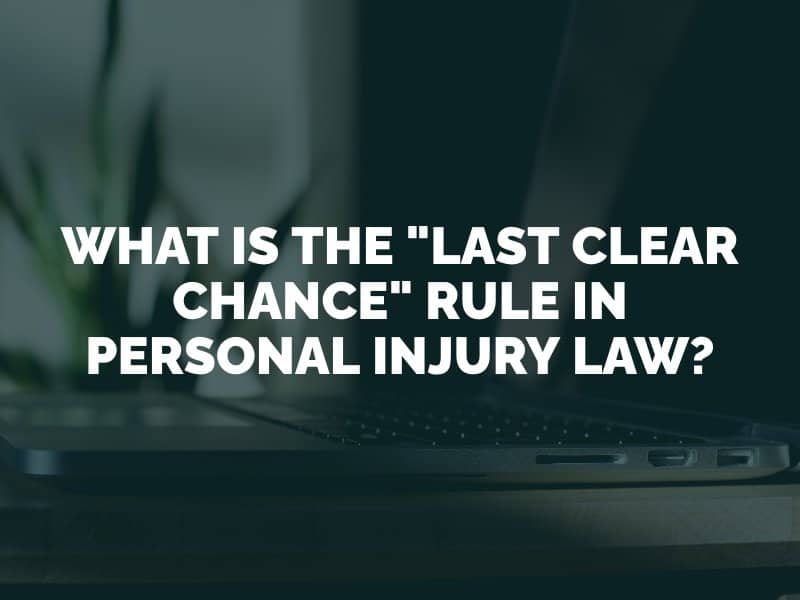When engaged in personal injury litigation, it is important to understand legal concepts that relate to your case. The “last clear chance” rule is one such concept that should be understood in order to maximize your ability to navigate the claims process effectively. This rule has its origins in common law, meaning it is defined by court decisions made over the years, rather than specific statutes.

In instances where the plaintiff was negligent in some form leading up to an accident that caused personal injury, the last clear chance rule states that the negligent plaintiff is obligated to prove that the defendant was the last party to have an opportunity to change course and avoid injuring the plaintiff. This rule is different depending on what state you are in, but generally, it implies that negligent plaintiffs are entitled to recover compensation from defendants who had the opportunity to avoid an accident completely but did not exercise the reasonable care needed to do so.
Although the last clear chance rule varies in nature from state to state, there are typical methods of effectively employing this rule to win a personal injury case. Usually, plaintiffs must prove the following:
In a sense, this rule requires that plaintiffs were not the last party with an opportunity to avoid the accident. Rather, the defendant was, meaning their negligence caused the accident. Though, proving this takes skilled legal knowledge and a range of expertise. So, it is suggested that you retain counsel from an experienced Denver personal injury lawyer to fight for compensation using the last clear chance rule.
Most states have adopted comparative negligence models for handling personal injury cases. These comparative negligence laws state that plaintiffs can still recover compensation following an accident if their share of negligence in the accident amounts to 50 percent or less. In some states, they can also recover damages if their negligence was more than 50 percent under “pure” comparative negligence laws.
Under comparative negligence laws, the last clear chance rule is somewhat redundant, as comparative negligence dictates that plaintiffs be held accountable based on their level of negligence. Therefore, even if the defendant had the last clear chance to avoid an accident, the plaintiff’s negligence leading up to that point may increase their share of responsibility for the accident.
Fang Accident Lawyers is familiar with both comparative negligence laws and the last clear chance rule as they apply to personal injury cases. To learn more about how you can leverage these laws to increase the likelihood of success in your claim, contact us by submitting the contact form on this page.